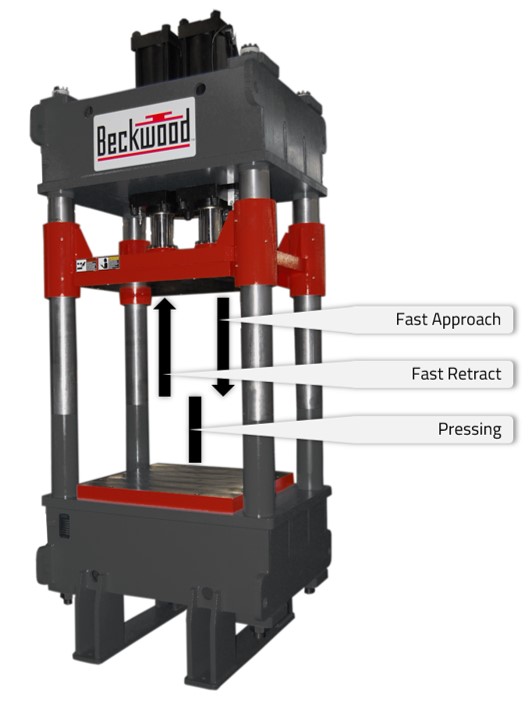
In today’s world of JIT manufacturing, reducing cycle times is more critical than ever. With press speeds ranging from 1,000+ cycles per minute to one cycle every 2 hours (or more), choosing the right press specifications can be challenging.
While mechanical speeds are calculated in strokes per minute (SPM), hydraulic press speeds are calculated in inches per minute (IPM). This is because a hydraulic press can achieve full tonnage anywhere throughout the stroke. The inherent versatility in a hydraulic system allows ram speeds, travel distance, dwell time, and more to be precisely programmed to meet production requirements.
So, what ram speeds do you actually need?
Press speed ultimately depends on the part you’re making and the method you’re using to make it. For example, if you’re compression molding composite materials, cycle profiles are often complex and involve heat ramping and curing under pressure (dwell). However, if you’re stamping shallow automotive components, cycle profiles are simple and can be achieved extremely fast.
In order for your press manufacturer to design the optimal forming solution, you must first determine the following:
1. What are your production goals?
2. What is your current cycle profile?
Answering these questions will ultimately dictate not only the speed of the press but also which type of press is most cost-effective for your operation.
How is a press’ cycle profile determined?
Your cycle profile consists of the physical aspects of a particular cycle. This includes:
- Distance of ram travel under no load (Approach or Fast Approach). Speeds during this portion of the stroke are faster since they do not require any force.
- Distance of actual working stroke (Pressing).
- Distance of ram travel to “home” position (Return or Fast Return).
- Any dwell time at the bottom of the stroke or while under pressure
Once these parameters are established, the appropriate ram speeds can be calculated in conjunction with the right cylinder configuration and power system to provide the necessary cycles per minute. Variable ram speeds are also available through the use of flow controls and variable frequency drives (VFDs).
Still unsure where to start? Consult a Beckwood engineer about your required ram speeds and cycle profiles

